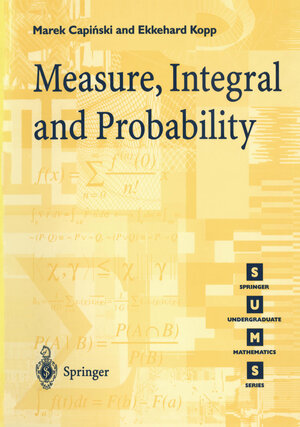
From the reviews:
The level of explanation is excellent and great care has gone into providing motivation for the study of all aspects of the material…Overall, this is an excellent and interesting text.
Times Higher Education Supplement
A clear, understandable treatment of a very problematic area…The authors are to be commended for their lucid writing style.
Journal of the American Statistical Association
From the reviews of the second edition:
„This book is a gentle introduction that makes measure and integration theory accessible to the average third-year undergraduate student. The ideas are developed at an easy pace in a form that is suitable for self-study, with an emphasis on clear explanations and concrete examples rather than abstract theory. … Key aspects of financial modelling, including the Black-Scholes formula … help the reader understand the underlying mathematical framework.“ (L'Enseignement Mathematique, Vol. 50 (3-4), 2004)
„The central concepts of this excellent undergraduate text are those of Lebesgue measure and the Lebesgue integral, especially with a view to their applications in probability and, more briefly, finance. … Throughout, the material is presented clearly and rigorously, with an emphasis on accessibility and explicitness. … the book engages the reader actively, and the applications in both probability and finance are clearly developed from a measure-theoretic perspective.“ (Jennie Golding, The Mathematical Gazette, Vol. 90 (518), 2006)
„There exist many books on each of the areas of real analysis and probability, including some which attempt to treat both subjects in the same treatise. … A fundamental strong point of the book under review is that the reader is led through a careful course … . For the second edition, the text has been thoroughly revised and expanded. … The selection and presentation of the material makes this a useful book for anintroduction to measure, integration theory and probability.“ (B. Kirstein, Zeitschrift für Analysis und ihre Anwendungen, Vol. 24 (4), 2005)
„This text succeeds in its aim of providing an introduction to measure and integration that is … accessible to undergraduates. Written in a clear engaging style, the text is seasoned with an abundance of concrete examples. … Each chapter concludes with a substantial section on probability and a brief section on finance. … a broad introduction to probability has been presented, extending to martingales, the strong law of large numbers, and the Lindeberg-Feller version of the central limit theorem.“ (J. W. Hagood, Zentralblatt MATH, Vol. 1103 (5), 2007)



